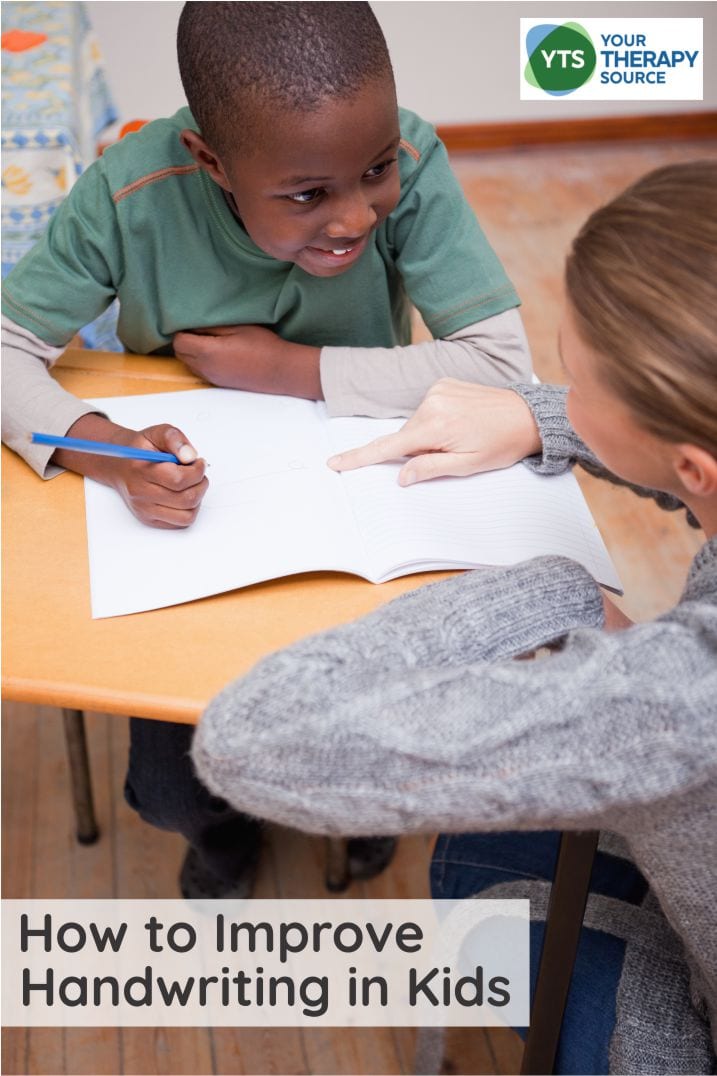How to Improve Handwriting in Kids – Tips from Dr. Beverly Moskowitz, OTR/L

Many people say that handwriting instruction is no longer a necessity because of the prevalence in the use of gadgets that effectively replace our need to write using traditional writing tools. Dr. Beverly Moskowitz, OTR/L, creator of the Size Matters Handwriting Program, shares with us her thoughts and suggestions on why handwriting instruction is still important and relevant today.
Dr. Moskowitz states that “preschoolers and early elementary students are just learning to think. And for your beginner learners, there is no better way to open the channels of inter-hemispheric communication than by putting pencil to paper. And the research proves it.”
From her 43+ years of experience as a pediatric Occupational Therapist, Dr. Moskowitz offers us her 10 suggestions on how to improve handwriting in kids!
10 Tips to Improve Handwriting in Kids
In the schools, students often receive handwriting remediation from occupational therapists to help students with legibility, speed, and functional handwriting. Here are several tips on how to improve handwriting in kids for occupational therapists.
Focus on Size.
Try scoring for letter size. Teach students how to score themselves. For example, when conducting a Size Matters lesson at the board or on their paper, make as many ‘bad’ letters as possible. Letters that are not STAR-WORTHY, defy the Rules for letter size. In other words, the Letter Lines either go above, below or do not touch the Writing Lines.
The letters may actually look like the intended letter. However, if it is not touching the Writing Lines in all the right places, it would not earn a Star. Correcting errors in Letter size will make an immediate difference in the consistency and therefore readability of the page. Ask the children if you have printed a Star-Worthy letter, and why it is or it isn’t. A critical analysis is an important component of the Size Matters program. Besides, you know that there is nothing your students like more than telling a grown-up they messed up.
Be realistic.
Readability and functionality are the goals. We are not entering any handwriting contests. We do, however, need to make sure that children can complete assignments, take notes, handwrite messages, fill in forms, keep pace with their classmates, and finally… have all of the above read back by teachers, peers, parents and themselves alike.
Empower teachers and students.
Empower your teachers and students with handwriting rules. The Size Matters Handwriting Program Rules are like giving the kids the answers to the test. In addition, children are encouraged to say them, sing them, add the hand movements and more, all day every day across all curricular content. But like a record repeating in their heads, the Rules give them concrete guidelines to judge their own printing.
Try the Dice Game
Turn students on to The Dice Game. It is so simple, yet so effective, especially once they know that dice determines practice.
Instruct the teacher to walk around with dice in his or her hand during any and all writing assignments. The audible clinking of the die reminds children to ‘Think Letter Size.’
Periodically, a teacher could stop by a student’s desk and ask him to critique a letter. Of course, they should only ask students to critique a letter(s) already been taught and practiced.
If the letter is printed the wrong size, ask the student “What size is this letter?” And what’s the Rule?” At that point in time, the teacher could present the die, and to allow the student to select a die that is ‘Calling their name.” Then, at the bottom of the page, the back of the paper or on another piece of paper entirely, the child could practice making that letter (or word) Star-Worthy.
Encourage teachers to focus on the assignment. We OTs must appreciate that they have a curriculum to follow. But in this way, the children are reminded to print their letters the correct size. And believe me… if you stop one student, his classmates are similarly alerted. They could be next!!
Offer Low Tech Options
Offer low tech options than enable them to model accurate letter sizes, like adapted writing paper scanned into Smartboards, writing lines on the wipe-off whiteboards or permanent lines on any board.
Provide Various Levels of Writing Paper
Provide samples of various grade levels of adapted writing paper. Get children excited about graduating to a higher-grade level paper because they are making their letters the right size.
Slow and Steady
Start slow. For example, the Size Matters Handwriting Program teaches the Size One letters first, upper then lower case. Only hold your child accountable for the letters you’ve taught and mastered.
Get Accuracy with Letter Size First
Don’t focus on spacing until you have 80% accuracy on Letter Size.
Provide Visual Cues
Offer near point visual cues for Letter Size and near point propped samples for copying.
Our Goal Needs to Be Functional Legible Printing
Let’s be honest. Our children are growing up in an era of instantaneous networking. The need to communicate and the demand to do so in a timely manner will dominate our students preferred options down the road. Just the same, there will always be a need to print, even if it is in limited quantities. Our goal needs to be functional legible printing. Teachers are our partners. We are on their turf. Respect the fact they have a full plate already. Share materials and strategies that are doable within their already busy days.
About Dr. Beverly Moskowitz, OTR/L
Dr. Beverly Moskowitz is a nationally recognized speaker with 43+ years experience as a pediatric Occupational Therapist, and a fellow of the American Occupational Therapy Association.
As a school therapist, she serviced more than fifteen school districts, visiting over 60 different schools. Her broad exposure to varied teacher methods, administrative styles, and treatment interventions confirmed her resolve to ensure function, participation, and inclusion for all students without wasting time.
She is the author of multiple publications including Practical Strategies for Increasing the Effectiveness, Efficiency and Impact of your School Based Occupational Therapy Practice, she strives to teach other therapists how to implement best practices while ‘keeping the fun going.
Visit RealOTSolutions for more information on the Size Matters Handwriting Program.



